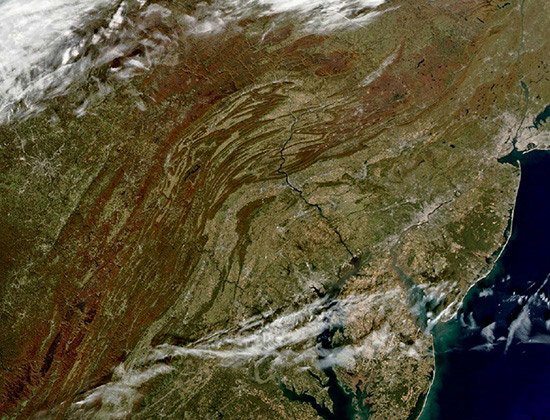The Appalachian Mountains, visible to airline passengers over Pennsylvania or drivers in Tennessee’s Smoky Mountains, present a landscape of twisted and tortured rocks. These rolling hills and mountains are the remnants of a once-majestic mountain range. Formed over multiple episodes of continental-plate collisions beginning about 480 million years ago, the Appalachians, which once rivaled the modern Alps and Rockies in height, have been eroded to more modest elevations, rarely exceeding 6,700 feet (2,000 meters).
Initially, the area of the North American craton that would become the Appalachians was a passive margin, a tranquil boundary between two tectonic plates. Around 480 million years ago, this changed as plate movements transformed it into a convergent margin where plates began to collide. This period of mountain-building, known as the Taconic orogeny, involved a dense oceanic plate colliding with and subducting beneath the eastern edge of the less-dense North American continental plate.
The collision uplifted, folded, and metamorphosed rocks and sediments along the eastern North American shoreline and seafloor. Volcanic activity also occurred as the subducting plate melted, with magma rising to the surface. This process continued for about 40 million years until the oceanic plate was completely subsumed under the North American plate, reverting the region back to a passive margin as the young, tall mountains began to erode.
However, the Appalachian mountain-building didn’t end with the Taconic orogeny. For the next 250 million years, similar episodes of orogenesis occurred along the eastern margin, repeatedly adding new continental and marine sedimentary terrains to the continent and rejuvenating the mountain range. Today, the region is again a passive margin, and what we observe are the heavily eroded remains of these ancient plate collisions.

